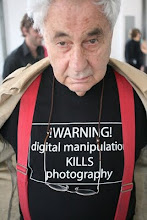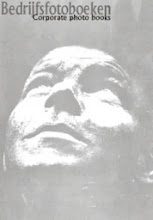 Sony Taps Into Photo Archive as a Resource During Hard Times New York Times
Sony Taps Into Photo Archive as a Resource During Hard Times New York TimesBy ROBERT LEVINE
Some of Sony’s music executives believe there is a gold mine under the company’s New York headquarters on Madison Avenue. It doesn’t look like much: just a small room, three floors below ground level, with a wall full of the sliding shelves you’d find in a law firm or university library.
 But the shelves hold decades of music history as captured by Columbia Records staff photographers: Miles Davis recording “Kind of Blue” in 1959 at the company’s old 30th Street Studio; Bob Dylan standing with then-girlfriend Suze Rotolo on a slushy Greenwich Village street in 1963; Bruce Springsteen proudly holding a copy of his first record in 1973.
But the shelves hold decades of music history as captured by Columbia Records staff photographers: Miles Davis recording “Kind of Blue” in 1959 at the company’s old 30th Street Studio; Bob Dylan standing with then-girlfriend Suze Rotolo on a slushy Greenwich Village street in 1963; Bruce Springsteen proudly holding a copy of his first record in 1973.Sony acquired Columbia in 1988, but for decades the images in the archives have been used mostly for box sets and other historical projects. But in another sign that the major labels are looking for new sources of revenue wherever they can find them, Sony BMG Music Entertainment is trying to tap into the treasures that its labels have locked away.
Last year the company started Icon Collectibles, a boutique business that sells art-quality reproductions of these photos online, for prices from $300 to $1,700, and through various partners (including the News Services Division of The New York Times). Now it is expected to announce Thursday that it has made a deal to sell its photos through the Morrison Hotel Gallery, which specializes in rock imagery. In mid-July the gallery will open an exhibition of photos from Columbia’s 30th Street Studio in its gallery on 124 Prince Street in SoHo, with plans for an exhibition of Miles Davis images in November.
“We’re looking to take advantage of all the assets of the company, not just the audio recordings,” said John Ingrassia, president of Sony BMG Music Entertainment’s commercial music group, which manages the company’s catalog. “We have the content, and we found a way to tap into it.”
 Some images in the archive may be familiar to music fans: Johnny Cash deep in thought with a guitar on his lap in 1959, Mr. Dylan sitting at a piano wearing his Ray-Ban sunglasses in 1965. Others have rarely been seen, including an image of Sly Stone in front of a reel-to-reel tape player in 1973 and dramatic photos of Muhammad Ali, then still known as Cassius Clay, recording the 1963 spoken-word album “I Am the Greatest!”
Some images in the archive may be familiar to music fans: Johnny Cash deep in thought with a guitar on his lap in 1959, Mr. Dylan sitting at a piano wearing his Ray-Ban sunglasses in 1965. Others have rarely been seen, including an image of Sly Stone in front of a reel-to-reel tape player in 1973 and dramatic photos of Muhammad Ali, then still known as Cassius Clay, recording the 1963 spoken-word album “I Am the Greatest!”The Morrison Hotel Gallery mostly sells images owned by prominent music photographers like Jim Marshall, who shot groups like the Rolling Stones and the Who in the ’60s, and Mick Rock, whose images of David Bowie helped define the glam-rock aesthetic.
“A good record company exploits its catalog,” said Peter Blachley, who founded the Morrison Hotel Gallery in 2002 with Rich Horowitz and the photographer Henry Diltz. The gallery now has branches in SoHo and the Bowery, as well as Los Angeles and San Diego.
To sell photos from the archive, Sony BMG gets the permission of the artists or their estates and gives them a cut of sales. Since photos do not interfere with the mainstream merchandising business, most musicians have given the company their blessing.
“When Sony came to us, we figured if fans wanted to buy something different, as long as it’s respectful, why not?” said Lou Robin, Johnny Cash’s longtime manager, who handles some of the Cash estate’s business affairs.
Besides the high-priced photographs Icon also plans to sell mass-market products with imagery from the archive, Mr. Ingrassia said. (BMG labels like RCA and Arista also have archives with potentially valuable imagery.) He added that he hoped Icon could eventually grow into “a seven-figure business.” That’s far less than a hit album earns, but in this economic climate, perhaps every million counts.
Essentially Icon enables Sony BMG to make money from the popularity of music without actually selling songs. As revenue from album sales has slipped, labels are looking for new ways to capitalize on the music experience.














Geen opmerkingen:
Een reactie posten